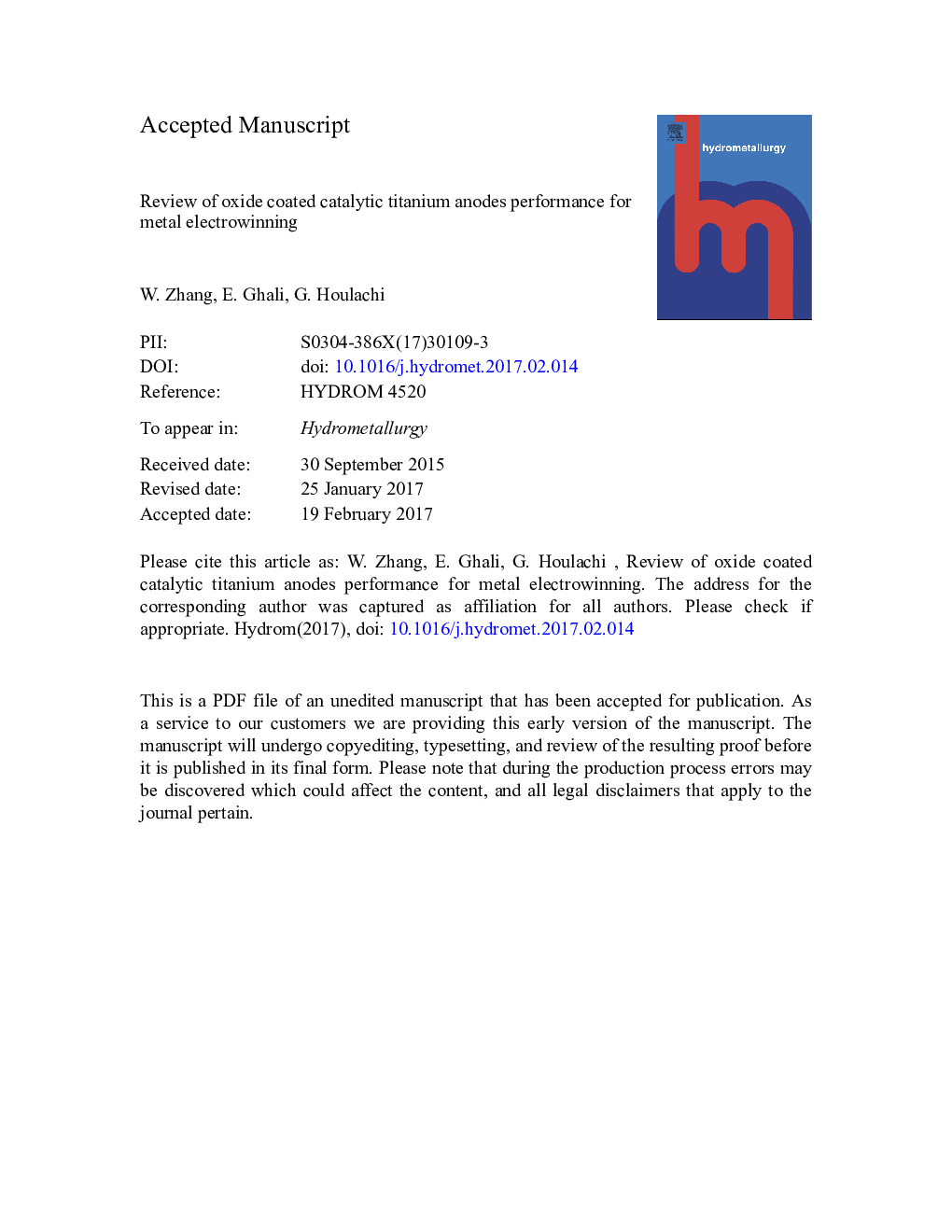| Article ID | Journal | Published Year | Pages | File Type |
|---|---|---|---|---|
| 4769358 | Hydrometallurgy | 2017 | 35 Pages |
Abstract
Conventional lead alloys are widely used in the zinc industry, in spite of their high overpotential and Pb contamination of the deposit during zinc electrowinning. The Oxide Coated Catalytic Anodes (OCAs) are considered to improve cathodic zinc purity and decrease cell voltage during zinc electrowinning. Considering the Ti substrate and its coatings such as (70%) IrO2Â +Â (30%) Ta2O5 coatings, the composites of OCAs have low overpotentials 400-500Â mV less than Pb-Ag anode. It was found that the oxygen evolution potential of the Ti/(Ir-Co) is 370Â mV lower than that of the lead alloy anode. Ta2O5 has more electric resistance than cobalt oxide and can lead to higher overpotentials. Also, RuO2 is an excellent electro-catalytic rutile structure. Considering generally a low cost coating of Ti substrate, Ni is more appreciable than that of zinc for the two systems of Co-Ni and Co-Zn coated over titanium. Addition of certain chemicals to the zinc electrolyte can decrease MnO2 deposition on the OCA anodes during zinc electrolysis. Moreover, the performance of OCA anodes increased with the nanoparticles addition of both IrO2 and the Sb-doped SnO2. To improve the service life of Ti substrate, procedures such as recrystallization, annealing treatment and surface anodic treatment could be employed. A conductive carbon-polymer has been developed to replace the titanium substrate, which is composed of graphite fibre, carbon black and polyolefin. Finally, aluminum has been studied for matrix because of its good electrical conductivity and mechanical strength.
Related Topics
Physical Sciences and Engineering
Chemical Engineering
Chemical Engineering (General)
Authors
W. Zhang, E. Ghali, G. Houlachi,
